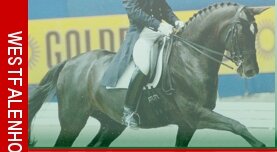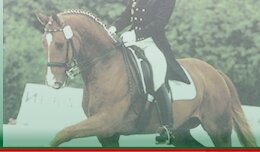


 |
 |
 |
|||
|
Westfälisches
|
Young Jumper Progressions: Heights, Questions, and ConfidenceWhen you're working with young jumpers, striking the right balance between challenge and confidence is key. You'll want to start low, ask thoughtful questions about progress, and gradually introduce new heights and types of obstacles. It's not just about the jumps themselves—your groundwork, rider position, and communication all play a major role. Wondering how to judge when your horse is truly ready for the next step? There are important markers you shouldn't overlook. Determining the Right Starting Height for Young JumpersWhen introducing young jumpers to fences, a starting height of approximately 2'6" is generally recommended. This height is advantageous as it helps build the horse's confidence while facilitating steady progress in their training. It's important to evaluate each young horse's readiness individually, as some may require lower heights, particularly if they're inexperienced or recovering from injuries. Maintaining lower jump heights allows horses to develop a solid jumping technique and gain essential experience without unnecessary stress. Providing young horses with a supportive learning environment is crucial, as it encourages them to engage with new challenges in a safe manner. Additionally, participating in riding or competitions at lower heights can reinforce their confidence and establish a strong foundation for future progression. Groundwork Foundations for Building ConfidenceGroundwork serves as a crucial element in developing a young jumper’s confidence. By emphasizing groundwork, riders can ensure that their horses acclimate to new challenges in a controlled environment, which fosters trust and communication. Utilizing obstacles combined with positive reinforcement effectively enhances the horse's confidence and motivation. Engaging in groundwork also improves obedience, facilitating the introduction of the jumping position in a gradual manner. This methodology aids in reducing anxiety for both horse and rider, creating a secure setting that reinforces the horse's readiness. Establishing a strong foundation through groundwork allows for a logical and measured progression to larger jumps. Gradual Gymnastic Progressions and Jump Height IncreasesAfter establishing a solid foundation in groundwork, it's advisable to gradually introduce young jumpers to gymnastic exercises that will help to develop their jumping skills. Begin with single jumps at a safe height, which allows the horse to gain confidence in their ability to clear obstacles. Progress to crossrails and vertical jumps, ensuring that the increase in difficulty occurs in a gradual manner. The use of ground poles can be beneficial, as they teach the horse to locate an appropriate takeoff point while also enhancing their balance and maintaining a steady rhythm during jumping. It is important to repeat exercises until the horse demonstrates confidence and a clear understanding of the tasks at hand. As the horse becomes more comfortable with the exercises, the height of the jumps can be incrementally increased, although initial heights shouldn't exceed 1.25 to 1.30 meters. Following this, incorporating narrower chutes can encourage the horse to jump straight, which is essential for developing technique. This methodical approach is effective in ensuring that the horse builds both confidence and proper jumping technique with each training session. By prioritizing gradual progressions and consistent practice, trainers can significantly improve the jumping capabilities of young horses over time. Rider Position and Enhancing CommunicationA strong rider position is essential for effective communication with a young jumper. Maintaining a straight alignment from the heel through the hip to the shoulder is critical for supporting the horse's balance and establishing a stable base. It's important to keep the heels down and the lower leg positioned close to the horse's sides to achieve secure control. Communication is facilitated through soft hands and bent elbows, which enable a gentle yet effective connection with the horse. Additionally, maintaining a focus on a point between the horse's ears can enhance the rider's awareness and responsiveness during the ride. Incorporating daily groundwork and utilizing positive reinforcement techniques can contribute to building a foundation of assurance and trust between the rider and the horse. When the rider employs a correct position and establishes clear communication, both horse and rider are likely to approach the jumper ring with a greater sense of confidence. Proper positioning ultimately enhances overall performance and safety in the saddle. Navigating Common Concerns and Real-World ScenariosWhen working with young jumpers, it's important to establish effective communication and maintain proper rider position. Real-world scenarios, particularly at horse shows, can introduce various challenges. It's advisable to consider entering lower classes, especially for horses that are inexperienced or rehabilitating from injuries. This strategy can foster confidence in both the horse and rider. To determine appropriate jump heights, consult with the course designer about the standardized dimensions used in the competition. Training at home with consistent practice over lower heights can reinforce the horse's trust in the rider. Additionally, maintaining open collaboration with trainers and event management is crucial for ensuring the horse's ongoing development and building confidence in competitive environments. This strategic approach contributes to a more positive experience for both the horse and rider in the ring. ConclusionAs you guide your young jumper through these progressions, remember that patience and consistency build lasting confidence. Start low, focus on solid groundwork, and use gymnastic exercises to safely increase jump heights. Stay attentive to your horse’s needs and keep refining your own position and communication skills. Collaborate with your trainer to tackle questions and adjust plans as needed. With the right approach, you and your horse can enjoy steady growth and rewarding success together. |